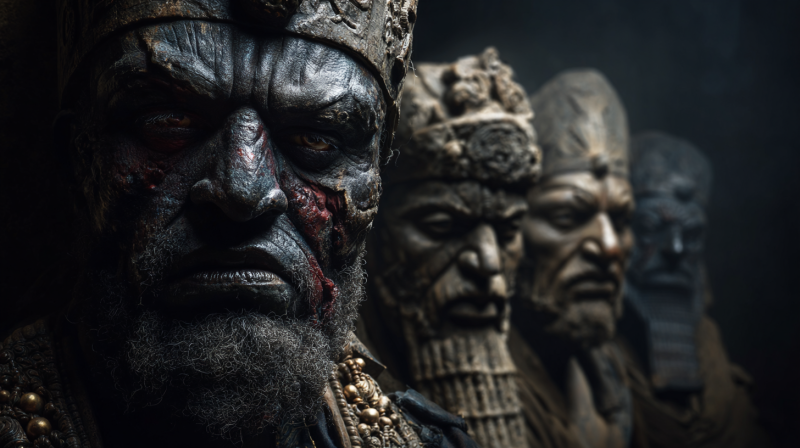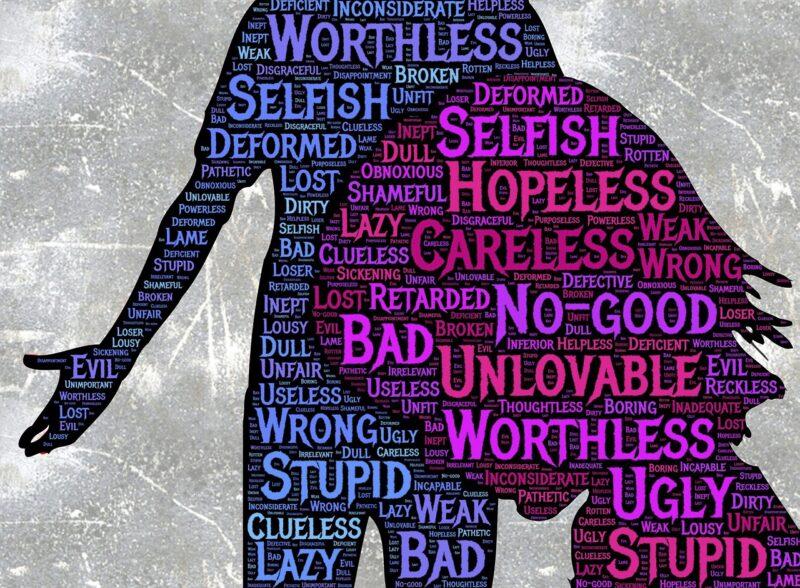Ancient Egypt, a civilization known for its monumental architecture and profound mysticism, has always captivated the imagination of people around the world. Among its most enigmatic and intriguing artifacts is the “Book of the Dead,” a collection of texts that served as a guide for the deceased in their journey through the afterlife. This ancient manuscript, filled with spells, hymns, and rituals, was believed to assist souls in navigating the perilous path to eternity and securing a place in the divine realm of Osiris.
In this blog post, we will explore the origins, structure, and significance of the Egyptian Book of the Dead. We will delve into the mythology and beliefs surrounding the afterlife in ancient Egypt, the contents of the Book of the Dead, and its impact on both ancient and modern cultures. By the end, you will have a comprehensive understanding of this ancient guide to the afterlife and its enduring legacy.
The Origins and Evolution of the Book of the Dead
The Book of the Dead, known to the ancient Egyptians as “The Book of Coming Forth by Day,” is not a single book but a compilation of texts that evolved over time. Its origins can be traced back to the Pyramid Texts of the Old Kingdom (c. 2686–2181 BCE) and the Coffin Texts of the Middle Kingdom (c. 2055–1650 BCE).
The Pyramid Texts
The Pyramid Texts are the oldest religious writings in the world, inscribed on the walls of pyramids belonging to Pharaohs of the Old Kingdom. These texts were designed to ensure the pharaoh’s safe passage to the afterlife and his transformation into a god. They included spells, prayers, and rituals intended to protect the pharaoh from danger and guide him to the realm of Osiris, the god of the dead.
The Coffin Texts
During the Middle Kingdom, the religious texts were democratized and made available to non-royal individuals. These texts, known as the Coffin Texts, were inscribed on coffins and included many of the same spells and prayers as the Pyramid Texts but were adapted for use by common people. The Coffin Texts marked a significant development in the evolution of Egyptian afterlife beliefs, as they were more accessible and personalized.
The Book of the Dead
The Book of the Dead emerged during the New Kingdom (c. 1550–1070 BCE) as a more comprehensive and portable collection of spells and rituals. These texts were often written on papyrus scrolls and placed in tombs to aid the deceased in their journey through the afterlife. Unlike the Pyramid and Coffin Texts, the Book of the Dead was not restricted to the elite but was available to anyone who could afford it.
Structure and Contents of the Book of the Dead
The Book of the Dead is a compilation of spells, hymns, and prayers designed to assist the deceased in their journey through the afterlife. These texts were not standardized, and each copy could vary in content and length. However, they generally followed a similar structure, guiding the deceased through various stages of the afterlife.
Spells for Protection and Guidance
The Book of the Dead begins with spells intended to protect the deceased from danger and provide guidance. These spells include invocations to gods and goddesses, such as Ra, Osiris, and Anubis, asking for their protection and assistance. The deceased would recite these spells to ward off evil spirits and ensure a safe passage through the underworld.
The Judgment of the Dead
One of the most crucial sections of the Book of the Dead is the judgment of the dead, where the deceased’s heart is weighed against the feather of Ma’at, the goddess of truth and justice. This scene is depicted in the famous “Weighing of the Heart” ceremony. If the heart is found to be lighter than the feather, the deceased is deemed worthy and granted eternal life. The monstrous Ammit will devour the soul if it is heavier, which will result in eternal damnation.
Spells for Transformation and Empowerment
The Book of the Dead also includes spells for transformation and empowerment, allowing the deceased to take on various forms and gain abilities in the afterlife. These spells enable the deceased to transform into animals, birds, and other beings, granting them the freedom to move and explore the afterlife. Additionally, some spells grant the deceased divine powers, allowing them to merge with gods and partake in their divine essence.
Hymns and Prayers
Hymns and prayers to various gods and goddesses are another essential component of the Book of the Dead. These hymns praise the deities and seek their favor and protection. They also reaffirm the deceased’s devotion to the gods and their adherence to Ma’at, the divine order.
The Mythology and Beliefs of the Afterlife
To fully understand the significance of the Book of the Dead, it is essential to explore the mythology and beliefs surrounding the afterlife in ancient Egypt. Due to their mythology and religious practices, the ancient Egyptians had a complex and multifaceted view of the afterlife.
The Duat: The Egyptian Underworld
The Duat, the Egyptian underworld, was believed to be a vast and perilous realm where the deceased would face various challenges and trials. It was a place of darkness and danger, inhabited by demons, monsters, and other malevolent beings. However, it was also a realm of potential rebirth and transformation, where the deceased could achieve eternal life and divine status.
The Journey of the Soul
The journey of the soul through the Duat was a central theme in Egyptian afterlife beliefs. This journey was fraught with obstacles and dangers, requiring the deceased to possess knowledge and power to overcome them. The Book of the Dead provided the necessary spells and guidance to navigate this treacherous path and reach the realm of Osiris.
The Realm of Osiris
Osiris, the god of the dead and the ruler of the afterlife, presided over the realm where the deceased hoped to be admitted. Osiris was associated with resurrection and renewal, symbolizing the promise of eternal life. The deceased sought to join Osiris in his divine realm, where they would enjoy an existence free from pain and suffering, partaking in the eternal cycle of life and death.
The Importance of Ma’at
Ma’at, the concept of truth, balance, and cosmic order, was fundamental to the Egyptian worldview and afterlife beliefs. Adherence to Ma’at was essential for achieving a favorable judgment in the afterlife. The deceased had to demonstrate their commitment to Ma’at by living a righteous life and upholding the principles of truth and justice.
The Impact and Legacy of the Book of the Dead
The Book of the Dead had a profound impact on ancient Egyptian culture and continues to captivate modern audiences. Its significance extends beyond its role as a religious text, influencing various aspects of Egyptian art, literature, and society.
Cultural Influence
The themes and imagery of the Book of the Dead are evident in Egyptian art and architecture. Tomb paintings, reliefs, and sculptures often depict scenes from the Book of the Dead, illustrating the journey of the soul and the afterlife. These artworks served as visual representations of the spells and rituals, reinforcing their importance and providing a tangible connection to the afterlife beliefs.
Literary and Philosophical Impact
The Book of the Dead also influenced Egyptian literature and philosophy. The themes of life, death, and the afterlife permeated Egyptian writings, from funerary texts to moral teachings. The concept of Ma’at, in particular, shaped the ethical and philosophical framework of Egyptian society, emphasizing the importance of truth, justice, and cosmic order.
Modern Fascination
In modern times, the Book of the Dead continues to captivate scholars, historians, and the general public. Its enigmatic and mystical nature has inspired countless works of fiction, art, and popular culture. The fascination with ancient Egypt and its afterlife beliefs endures as people seek to understand the mysteries of the past and their relevance to contemporary life.
Conclusion
The Egyptian Book of the Dead is a remarkable testament to the ancient Egyptians’ profound spirituality and their quest for eternal life. This collection of spells, hymns, and rituals provided a comprehensive guide to the afterlife, assisting the deceased in navigating the challenges of the underworld and securing a place in the divine realm of Osiris. Its impact on ancient Egyptian culture and its enduring legacy in modern times reflect its significance as a cornerstone of religious and philosophical thought.
By exploring the origins, structure, and beliefs associated with the Book of the Dead, we gain a deeper understanding of the ancient Egyptians’ worldview and their enduring quest for immortality. The Book of the Dead serves as a reminder of the timeless human desire to understand and transcend the mysteries of life and death, leaving an indelible mark on the annals of history.
References
- Allen, James P. The Ancient Egyptian Pyramid Texts. Society of Biblical Literature, 2005.
- Faulkner, Raymond O. The Ancient Egyptian Book of the Dead. British Museum Press, 2010.
- Hornung, Erik. The Ancient Egyptian Books of the Afterlife. Cornell University Press, 1999.
- Taylor, John H. Journey through the Afterlife: Ancient Egyptian Book of the Dead. Harvard University Press, 2010.
- Assmann, Jan. Death and Salvation in Ancient Egypt. Cornell University Press, 2005.
- Budge, E. A. Wallis. The Egyptian Book of the Dead: The Papyrus of Ani. Dover Publications, 1967.
- Wilkinson, Richard H. The Complete Gods and Goddesses of Ancient Egypt. Thames & Hudson, 2003.
- Pinch, Geraldine. Egyptian Mythology: A Guide to the Gods, Goddesses, and Traditions of Ancient Egypt. Oxford University Press, 2004.
- Lesko, Leonard H. The Ancient Egyptian Book of Two Ways. University of California Press, 2020.





